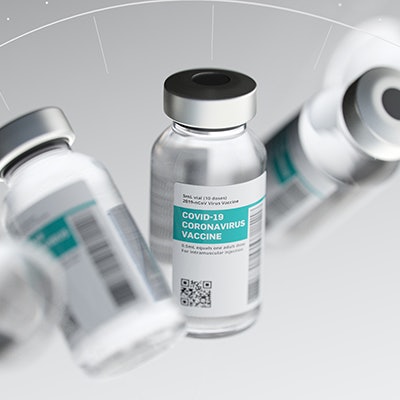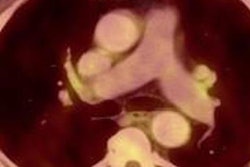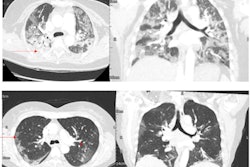
Chest CT illuminates differences in how well different COVID-19 vaccines work to mitigate the impact of the illness, a study published June 1 in the American Journal of Roentgenology shows.
The results also underscore the benefit of getting vaccinated for COVID-19, explained a team led by Dr. Simone Vicini of Sapienza University of Rome.
"[Our] findings provide additional evidence of the effectiveness of COVID-19 vaccination in terms of reduced pneumonia frequency and severity in those with breakthrough infections, while also highlighting variations between vaccine types," the group wrote.
Even though COVID-19 vaccines are being used around the world, more than a third of individuals eligible for them have not been vaccinated, Vicini and colleagues noted. Why? People are concerned that vaccines don't work, according to the group. But perhaps explaining to patients that even if they contract COVID-19 after vaccination, the illness is less severe could help address vaccination fears.
"Evidence of the role of vaccination in reducing the frequency and severity of pneumonia in the setting of breakthrough infection could help combat vaccine hesitancy," the authors wrote.
Vicini's team conducted a study that included 467 patients who underwent chest CT between December 2021 and February 2022 while hospitalized for COVID-19. Of the total patient cohort, 216 were unvaccinated, while 251 were vaccinated; of those vaccinated, 167 received the BNT162b2 mRNA vaccine (Pfizer) and 84 the ChAdOx1-S adenovirus vector vaccine (AstraZeneca).
Unsurprisingly, the study showed that unvaccinated patients had more incidence of pneumonia and higher mean CT severity scores. Unvaccinated patients had a significantly higher incidence of fever than in those inoculated with either vaccine (79%, compared with Pfizer's 43% and AstraZeneca's 54%), as well as higher incidence of the "crazy paving" finding on CT exam, which is associated with progressive COVID-19 pneumonia.
Yet the study also demonstrated differences between the two COVID-19 vaccines, one of which being that the incidence of labored breathing was significantly higher in patients with the AstraZeneca vaccine compared with the Pfizer vaccine (p = 0.02).
| Comparison of COVID-19 effects among vaccinated and unvaccinated patients and by vaccine type | |||
| Measure | Unvaccinated | Pfizer vaccine | AstraZeneca vaccine |
| Mean CT severity score (sum of scores ranging from 0 to 5 for five lung lobes) | 9.7 | 5.2 | 6.2 |
| CT finding: crazy paving | 11% | 8% | 0% |
| Presence of pneumonia | 85% | 49% | 51% |
| Presence of fever | 79% | 43% | 54% |
The study indicates that some vaccines may be more effective than others and underlines the role CT can play in assessing vaccine performance, according to Vicini and colleagues.
"These findings reflect both the importance of considering the specific vaccine type when evaluating vaccine effectiveness, as well as the potential utility of chest CT findings as a source of additional insight when comparing vaccines," they wrote.





















